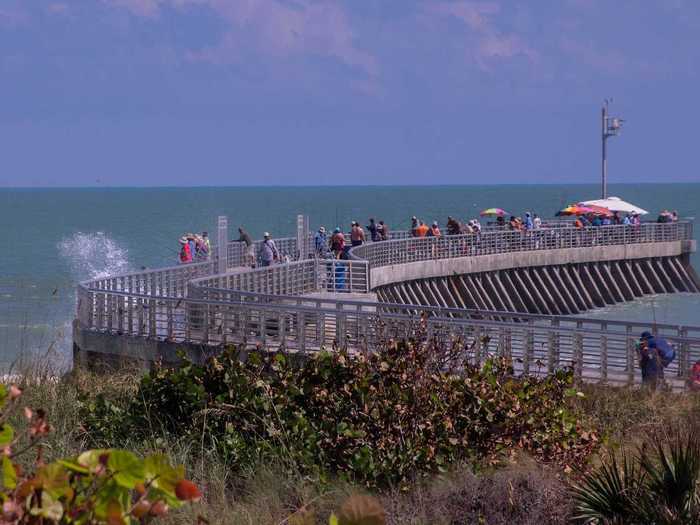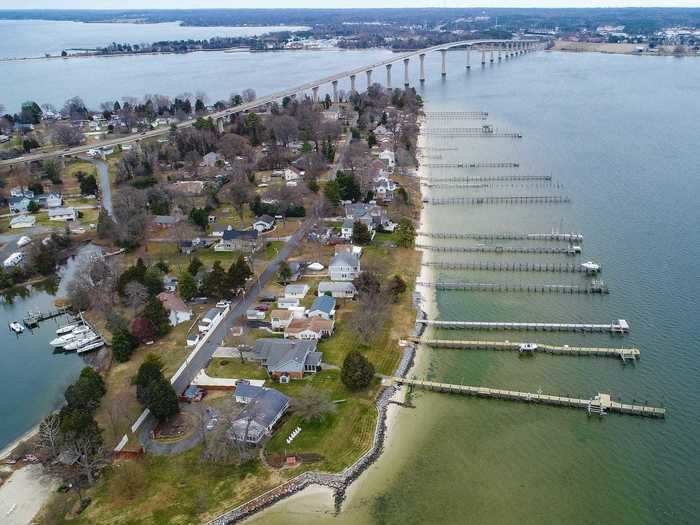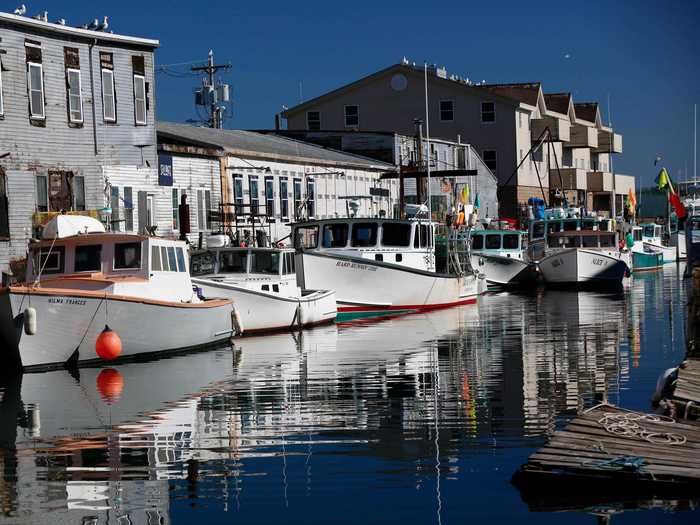Hartford, Connecticut, is among the best coastal cities to live in after the pandemic.Sean Pavone/Shutterstock
- Business Insider recently looked at the best cities to move to post-pandemic.
- Among America's coastal cities, high costs of living, longer weekly commutes, and large population densities tended to contribute to lower scores compared to more inland metro areas.
- However, some cities on America's coasts still scored pretty well.
- Portland, Maine, ranks at the top of the list among cities on one of America's ocean coasts.
If you're thinking about moving after the coronavirus pandemic and love beaches and ocean-front views, one of these cities might be right for you.
Business Insider recently looked at what US cities could be the best places to move after the coronavirus pandemic based on various economic, population, and workforce metrics that may influence where one wants to live.
Cities located on the coast typically ranked poorly compared to more inland locales, owing to low scores on some of the metrics that we used. Large population densities, longer average weekly commutes, and higher costs of living brought down the scores of many coastal cities.
You can read more about our methods, metrics, and data sources we collected here.
However, a few metro areas on America's ocean coasts fared well on our post-pandemic metrics. Portland, Maine ranked at the top when only considering metro areas on the coast. This metro area has a high share of jobs that could potentially be done from home based on research from The University of Chicago.
It is important to note that the bulk of the data for our metrics came from before the pandemic and its economic disruption, and so conditions in these cities could change depending on how things continue to evolve.
Read on to see which cities along the coast are best to move to.
11. Eugene, Oregon
Robert Candy / EyeEm/Getty Images
Eugene has the second-shortest weekly commute among metro areas on the coast at three hours and 17 minutes. This metro area also has a population density of 83.9 people per square mile, the fourth-smallest amount among these metro areas. Additionally, 34.1% of jobs can be done from home, better than most metro areas on the coast.
10. Norwich, Connecticut
Jennifer Yakey-Ault/Shutterstock
The pre-coronavirus February unemployment rate of 3.6% was near the national rate of 3.5%. Norwich has the third-highest total spending per student in elementary and secondary public schools among coastal metro areas, where the school district in the metro area with the most students enrolled spends $20,589 per pupil.
9. Sebastian, Florida
tamara321/Shutterstock
In Sebastian, the cost of living is 7.3% lower than the national average, better than most metro areas on the coast. About 72.7% of households spend less than 30% of their income on housing, the fourth-highest share among coastal metro areas.
8. Richmond, Virginia
Sean Pavone/Shutterstock
In Richmond, about 38.7% of jobs can be done from home, the 15th-highest share among metro areas on the coast. Before the coronavirus, the unemployment rate of this metro area was 2.8%, which was 0.7 lower percentage points than the national rate in February and the 13th-lowest among these metro areas.
7. Lake Charles, Louisiana
Shutterstock
Lake Charles' cost of living is 11.1% lower than the national average, tied for the ninth-lowest index among coastal metro areas. The metro area has a population density of 89.6 people per square mile, the seventh-lowest population density among these metro areas.
6. New Bern, North Carolina
Zach Frailey/Getty Images
New Bern has a population density of about 82.1 people per square mile, the third-lowest population density among metro areas on the coast and lower than most US metro areas. The metro area also has a shorter weekly average commute than most US metro areas and the shortest among coastal metro areas, at three hours and nine minutes.
5. Hartford, Connecticut
Sean Pavone/Shutterstock
In Hartford, about 43.6% of jobs can be done from home, the sixth-highest share among coastal metro areas and 13th-highest among all US metro areas. The average weekly commute is shorter than most coastal metro areas at four hours and five minutes.
4. Brunswick, Georgia
Michael Milner/Getty Images
The cost of living in Brunswick is 12.0% lower than the national average, the sixth-lowest cost of living index among metro areas on the coast. In Brunswick, about 66.7% of households spend less than 30% of their income on housing, indicating better housing affordability than most metro areas along the coast.
3. California, Maryland
Nicole Glass Photography/Shutterstock
51.9% of jobs can be done from home in this metro area, the highest share among all US metro areas. The cost of living in this metro area is 1.9% lower than the national average and better than most metro areas on the coast.
2. Tallahassee, Florida
DenisTangneyJr/Getty Images
About 43.4% of jobs can be done from home in this Florida metro area, the 14th-highest share among all US metro areas. Tallahassee's average weekly commute is about three hours and 52 minutes, tied for the 18th-shortest commute among coastal metro areas. This metro area's cost of living is also 6.6% lower than the national average, better than most metro areas on the coast.
1. Portland, Maine
About 38.5% of jobs can be done from home in Portland, Maine, the 16th-highest share among coastal metro areas and better than most US metro areas. About 41.5% of residents who are at least 25 years old have at least a bachelor's degree, the seventh-highest share among coastal metro areas.











